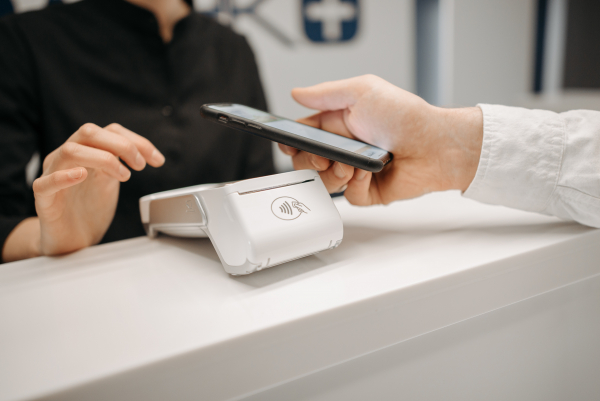If you asked three people to think about the last time they purchased something, they might each envision three completely different experiences.
The first person might remember going into a physical store, filling up a shopping cart and buying the items with cash at a self-checkout kiosk. The next person might think of when they bought two concert tickets online with a digital wallet and then used a payment service like Venmo to charge their friend for their ticket. Finally, the third person might remember when they purchased a one-of-a-kind piece of art at a virtual NFT (non-fungible token) auction using Bitcoin.
These three drastically different experiences all have one thing in common – flexibility. Each example allowed the shopper to make a purchase on their terms, using their chosen payment method on their preferred platform.
What's more, many of these payment experiences are relatively new and still gaining mainstream popularity. To keep up with the quickly evolving payment landscape and withstand changing customer preferences, retailers must understand evolving trends and adapt to them.
Let's discuss two of the major payment trends revolutionizing the retail industry in recent years.
Understanding Digital Currencies and Their Growing Popularity
Digital currencies are on the rise all across the world. In fact, digital currencies are being used by more than two billion people globally, with an average annual increase of 27% since 2020, according to Business of Apps. Juniper Research predicts that more than 60% of the world's population will use digital currencies by 2026.
Apple Pay and Google Pay are the top two global payment solutions, but PayPal, the owner of Venmo, is also a major player in this space. The popularity of these payment providers has grown significantly since the start of the pandemic, at which time shoppers increased their reliance on ecommerce.
Additionally, as more consumers become comfortable with the metaverse, digital payments have expanded to include cryptocurrencies like Bitcoin. According to Business Insider Intelligence, there will be more than twenty-five million bitcoin owners by the end of 2022, a number that has grown 17% this year.
But why are these payment options appealing? Digital payment forms are more secure than physical payment methods because they use encryption tactics and password or facial recognition protection. Cryptocurrency payment gateways, for example, focus on security and ensure that every transaction is based in legitimate blockchain and converted to the appropriate currency.
Cryptocurrencies and other types of digital currencies can be integrated with e-commerce websites, point-of-sale platforms, accounting solutions and more. This opens a new avenue for exciting shopper experiences. For example, the NBA team, The Utah Jazz, is now selling NFTs of the team's players – similar to traditional trading cards for sports. Jazz fans can scan a QR-code on their seats and buy the NFT directly from the team with cryptocurrencies.
The innovative purchase described above is just one example of how brands and retailers can use these unique payment methods to engage customers and build strong relationships. As the popularity of these currencies grows, retailers and brands that offer these experiences will stand out amongst the competition.
Exploring Diverse Checkout Options That Increase Efficiency
After the COVID-19 pandemic, convenience became a top priority for shoppers. With an increased attention on in-store efficiency, consumers are now demanding payment options that shorten checkout lines. These solutions can include checking out on a mobile phone, paying at a self-checkout kiosk, scanning items across the store or simply walking out.
The global self-checkout market is expected to grow by at least 13.3% every year from 2022 to 2030, according to Research and Markets. CivicScience's also estimated that 46% of shoppers between the ages of 18-34 prefer using self-service checkout options over service by a cashier.
In addition, mobile POS is on the rise with an estimated 10% growth rate every year until 2032. Mobile POS options allows shoppers to checkout in line or on the go. By scanning the items on their phone or a store-specific device, these consumers can enjoy the same quality, speed, security and real-time information that they receive at a cashier's checkout counter. What's more, these solutions are secure – they don't store any credit or debit card information related to the shoppers.
Similarly, scanless options like "Just Walk Out" technology are becoming more popular. In these checkout scenarios, shoppers can be pre-authorized to avoid checkout lines altogether. Then, consumers can pay on their phones, increasing efficiency and creating a seamless customer journey.
GK Can Help You Adapt to the Latest Payment Trends
GK is a world leader in payments and point-of-sale (POS) technology. Through our partnership with Flexa, the leading pure-digital payments network, and our innovative solutions like GK GO and Transaction+, GK can help any retailer stay ahead of the latest payment trends.
Contact us today to learn how we can help improve your payment experiences for today and tomorrow.

